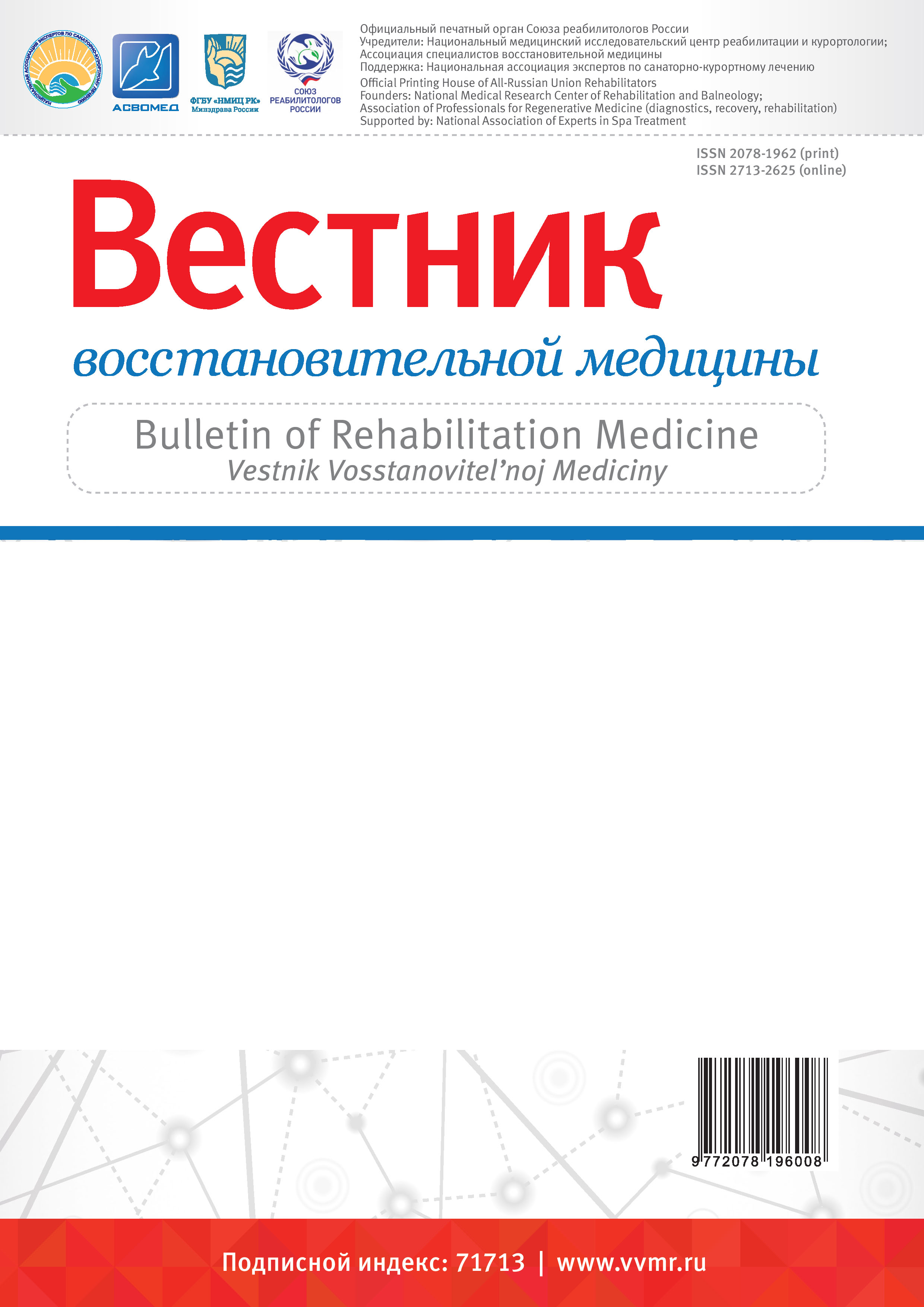Introduction. Rehabilitation of visual functions in childhood is an urgent problem for pediatric ophthalmology. Researchers are constantly looking for new rehabilitation measures for diseases such as myopia and retinopathy of prematurity. But not least important is the timely and effective implementation of rehabilitation measures to restore binocular functions in case of strabismus. Aim. This study aims to analyze bifoveal fusion recovery using method of LCD glasses with alternating occlusion of visual fields and compare its efficacy with orthoptic treatment using synoptophore Material and methods. Ninety-nine patients with prior esotropia, post-operative absence of bifoveal fusion and residual angle of deviation <10° were treated. All patients were hyperopic, the spherical refraction was not more than 4.75 diopters, the cylindrical refraction not more than 1.5 diopters. At the same time, presence of mild amblyopia was allowed. Patients with vertical strabismus and cyclotropia identified during synoptophore examination and cyclotropy examination using Maddox rods, as well as patients with concomitant ophthalmic pathology were excluded. All patients underwent a standard ophthalmological examination, as well as determination of binocular vision by a 4-point test, a study on a synoptophore with the determination of the objective and subjective angles of strabismus. The main group included 46 patients who underwent treatment by alternating occlusion of visual fields with LCD glasses continuously for 4 hours/day, the control group included 53 patients who underwent synoptophore treatment for 12 months (3-4 courses). The observation period was 12 months. Results. Bifoveal fusion and binocular vision were significantly more often recovered by LCD glasses treatment as compared to the sinoptophore treatment. Stable bifoveal fusion was formed in 32 (69.5%) and 11 (21%) children, unstable in nine (19.6%) and two (4%); treatment was ineffective in five (10.9%) and 40 (75%) patients, respectively. Binocular vision was obtained in 18 (39.1%) and 11 (21%) patients, and taking into account the subsequent diploptic treatment in cases with unstable bifoveal fusion in 12 more patients (66.7%) in the main group. Conclusion. Alternating occlusion of visual fields with LCD glasses is a more effective mean of bifoveal fusion and binocular vision recovery than orthoptic treatment with a synoptophore in patients after successful strabismus surgery.
kosoglazie, sensornaya fuziya, vosstanovlenie, zhidkokristallicheskie ochki, sinoptofor, reabilitaciya kosoglaziya
1. Ivanova G.E., Mel'nikova E.V., Shmonin A.A., Verbickaya E.V., Aronov D.M., Belkin A.A., Belyaev A.F., Bodrova R.A., Bubnova M.G., Buylova T.V., Mal'ceva M.N., Mishina I.E., Nesterin K.V., Nikiforov V.V., Prokopenko S.V., Sarana A. M.O., Stahovskaya L.V., Suvorov A.Yu., Hasanova D.R., Cykunov M.B., Shamalov N.A., Yashkov A.V. Primenenie mezhdunarodnoy klassifikacii funkcionirovaniya v processe medicinskoy reabilitacii. Vestnik vosstanovitel'noy mediciny. 2018; 1(89): 2-9.
2. Tihonova T.G. Refleksoterapiya v pediatricheskoy praktike. Vestnik vosstanovitel'noy mediciny. 2014; 4(62): 86-91.
3. Malayan E.A. O vozmozhnosti optimizacii vosstanovitel'nogo lecheniya miopii u detey s ispol'zovaniem faktorov fizicheskogo vozdeystviya. Vestnik vosstanovitel'noy mediciny. 2017; 6(82): 86-88.
4. Han M.A., Ivanov A.V., Rassulova M.A., Prikuls V.F., Mikitchenko N.A. Aktual'nye voprosy primeneniya magnitoterapii v pediatrii. Vestnik vosstanovitel'noy mediciny. 2015; 6(70): 42-47.
5. Nefed'eva D.L., Bodrova R.A. Opredelenie reabilitacionnogo potenciala u nedonoshennyh detey na osnove mezhdunarodnoy klassifikacii funkcionirovaniya, ogranicheniy zhiznedeyatel'nosti i zdorov'ya (MKF). Vestnik vosstanovitel'noy mediciny. 2015; 6(70): 2-9.
6. Kaschenko T.P. Binokulyarnaya zritel'naya sistema pri sodruzhestvennom kosoglazii. Dis..d.m.n. Moskva. 1978: 31 s.
7. Hemptinne C., Aerts F., Pellissier T., Ramirez Ruiz C., Alves Cardoso V., Vanderveken C., Yüksel D. Motor skills in children with strabismus. Journal of AAPOS. 2020; 24(2): 76.e1-76.e6. https://doi.org/10.1016/j.jaapos.2020.01.005
8. Birch, E. E. Stereopsis in infants and its developmental relation to visual acuity. Oxford University Press. London. 1993.
9. Huberman A.D. Mechanisms of eye-specific visual circuit development. Current Opinion in Neurobiology. 2007; (17): 73-80. https://doi.org/10.1016/j.conb.2007.01.005
10. Tychsen L. Can ophthalmologists repair the brain in infantile esotropia? Early surgery, stereopsis, monofixation syndrome, and the legacy of Marshall Parks. Journal of AAPOS. 2005; 9(6): 510-521. https://doi.org/10.1016/j.jaapos.2005.06.007
11. Sharma Pr. The pursuit of stereopsis. Journal of AAPOS. 2018; 22(1): 2.e1-2.e5. https://doi.org/10.1016/j.jaapos.2017.10.009
12. Bagheri M., Farvardin M. The clinical effect of surgical timing in infantile exotropia. Journal of AAPOS. 2018; 22(3): 167-169.e1. https://doi.org/10.1016/j.jaapos.2017.12.004
13. Rychkova S.I., Lihvanceva V.G. Rezul'taty ispol'zovaniya al'terniruyuschego pred'yavleniya stimulov v ortopticheskom lechenii u detey. Oftal'mohirurgiya. 2019; (2): 50-58.
14. Grigoryan A.Yu., Avetisov E.S., Kaschenko T.P., Yachmeneva E.I. Primenenie zhidkokristallicheskih ochkov dlya issledovaniya i vosstanovleniya binokulyarnyh funkciy. Vestnik oftal'mologii. 1999; 115(1): 27-28.
15. Erbagci I., Okumus S., Oner V., Coskun E., Celik O., Oren B. Using liquid crystal glasses to treat ambyopia in children. Journal of AAPOS. 2015; 19(3): 257-259. https://doi.org/10.1016/j.jaapos.2015.04.001
16. Spierer A., Raz J., Benezra O., Herzog R., Cohen E., Karshai I., Benezra D. Treating amblyopia with liquid crystal glasses: a pilot study. Investigative Ophthalmology and Visual Science. 2010; 51(7): 3395-3398. https://doi.org/10.1167/iovs.09-4568
17. Wang J., Neely D., Galli J., Schliesser J., Graves A., Damarjian T., Kovarik J., Bowsher J., Smith H., Donaldson D., Haider K., Roberts G., Sprunger D., Plager D. A pilot randomized clinical trial of intermittent occlusion therapy liquid crystal glasses versus traditional patching for treatment of moderate unilateral amblyopia. Journal of AAPOS. 2016; 20(4): 326-331. https://doi.org/10.1016/j.jaapos.2016.05.014
18. Aznauryan I.E., Shpak A.A., Balasanyan V.O., Agagulyan S.G. Novyy metod vosstanovleniya sensornoy fuzii putem poperemennogo razobscheniya poley vzora (predvaritel'noe soobschenie). Rossiyskaya detskaya oftal'mologiya. 2018; (1): 20-24.
19. Aznauryan I.E., Shpak A.A., Balasanyan V.O., Aznauryan E.I., Agagulyan S.G. Sravnenie effektivnosti vosstanovleniya sensornoy fuzii pri lechenii na sinoptofore i zhidkokristallicheskimi ochkami detey s operirovannym sodruzhestvennym kosoglaziem. Oftal'mohirurgiya. 2020; (1): 57-61.
20. Aznauryan I., Agagulyan S., Aznauryan E., Balasanyan V., Shpak A. New method of sensory fusion rehabilitation using intermittent occlusion with LCD glasses. Journal of AAPOS. 2018; 22(4): e20. https://doi.org/10.1016/j.jaapos.2018.07.068
21. Rychkova S.I., Schuko A.G., Malyshev V.V. Binarimetriya i zhidkokristallicheskie ochki v posleoperacionnoy reabilitacii detey s sodruzhestvennym shodyaschimsya kosoglaziem. Oftal'mohirurgiya. 2008; (3): 24-26.
22. Rychkova S., Ninio J. Alternation frequency thresholds for stereopsis as a technique for exploring stereoscopic difficulties. i-Perception. 2011; (2): 50-68. https://doi.org/10.1068/i0398
23. Wang J.Y., Leske D.A., Hatt S.R., Holmes J.M. Diplopia after strabismus surgery for adults with nondiplopic childhood-onset strabismus. Journal of AAPOS. 2019; 23(6): 313.e1-313.e5. https://doi.org/10.1016/j.jaapos.2019.07.005





